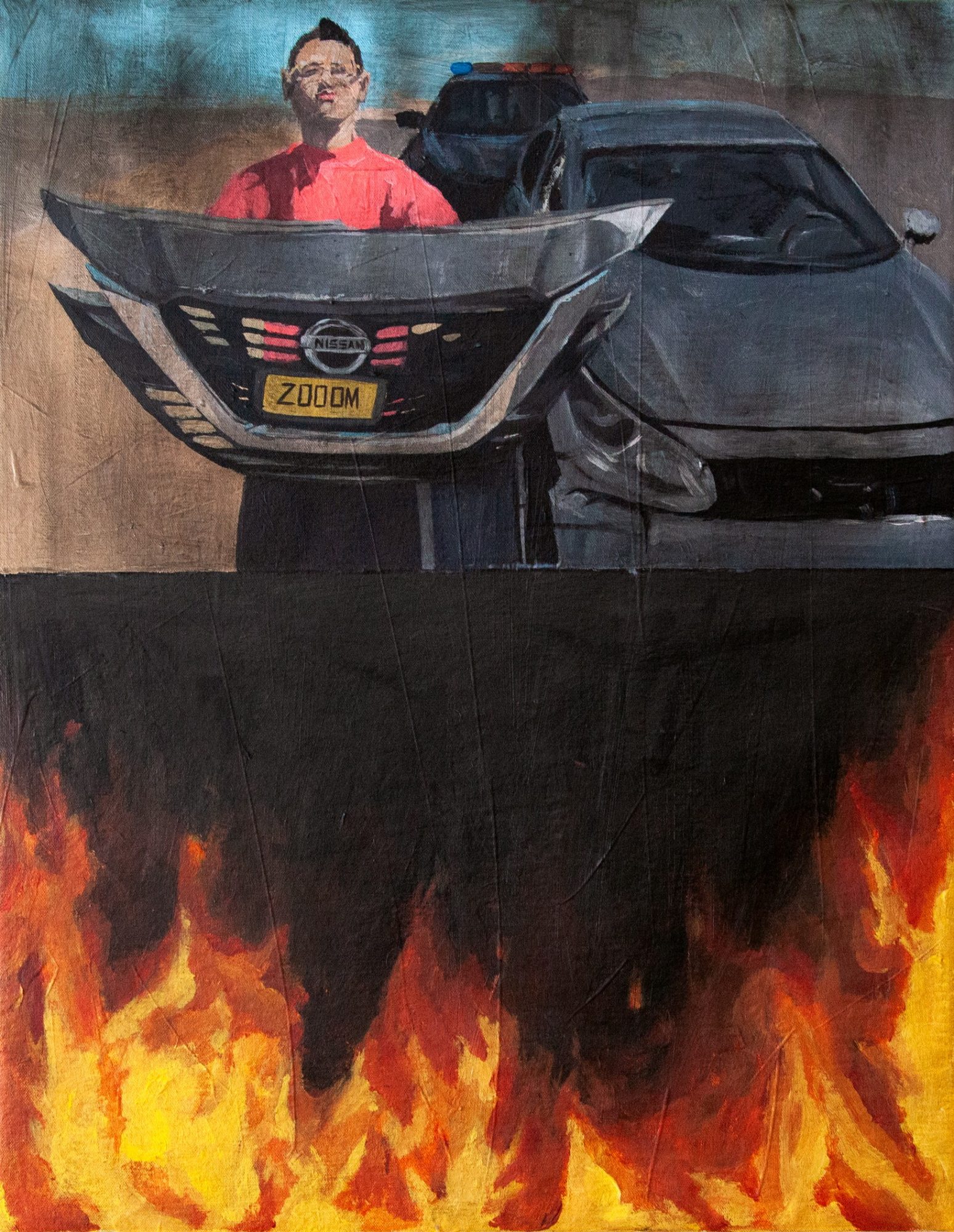

Today we’d like to introduce you to Xianglong Li.
Hi Xianglong, we’d love for you to start by introducing yourself.
My art is heavily influenced by my upbringing in industrial Chinese cities and my current residence in Brooklyn, New York, where street culture plays a significant role. I draw inspiration from the diverse cultural backgrounds of street youth and my memories of the “Gu Huo Zai” figures from Hong Kong gangster movies, particularly Young and Dangerous. This conveys a sense of casual adaptability and illustrates how my 90s generation coped with the absurdity of reality. I firmly believe that cultural and environmental differences shouldn’t hinder self-expression, and I have a deep respect and appreciation for individuals from diverse backgrounds.
My passion lies in exploring the ruins of the natural world, where I seamlessly blend human traces with the gentle and wild aspects of nature. I view this natural ease as a form of romance and a driving force behind my ongoing exploration of abandoned urban structures. My goal is to provide a means for young people living in bustling metropolitan areas to release their pent-up emotions through my art, as I see painting as a tender creation in an otherwise artificial world.
Can you talk to us a bit about the challenges and lessons you’ve learned along the way. Looking back would you say it’s been easy or smooth in retrospect?
My artworks often depict the people around me and the experiences I’ve been through, but I present them in a cinematic, gaming, or animated style or atmosphere. For instance, the artwork “Atlantic City”. It portrays an incident where my friends and I were in a car accident during a road trip. However, I’ve depicted the characters, actions, and even the setting in a manner reminiscent of a scene from a Hollywood movie. By placing the flames in the lower part of the image, the car accident also becomes a pivotal moment in the film.
Appreciate you sharing that. What else should we know about what you do?
I was born in a third-tier industrial city in China during the 1990s. Like many young people, I grew up watching animation and Hong Kong gangster movies. Today, my life is immersed in the street culture of Brooklyn, and social media, with its abundance of fragmented information, dark humor, memes, and emojis, shapes the way people communicate and perceive reality.
I incorporate symbols from this globalized youth pop culture into my artwork. These symbols often have shallow, fleeting, and ever-shifting meanings, brimming with ambiguity. For example, the concept of a suit, featured in works like “The First Gate,” becomes an iconic element from gangster movies. The recurring Balaclava mask in my art can be seen as a symbol of gang culture or certain subcultures, while others draw inspiration from the facekinis worn by elderly beachgoers in Qingdao, China.
Even the Adidas three stripes in my paintings don’t necessarily represent sports, as this American sportswear brand has transformed into a fashion statement for Russian hooligans.
So maybe we end on discussing what matters most to you and why?
Living in New York, I often experience a sense of alienation, being trapped, and uncertainty about the future. Life suddenly seems fractured; I know that something is wrong with the world, but I struggle to find the words to express it, or I’m unwilling to speak, and perhaps, I’ve even forgotten how to.
So, I started adopting a nonchalant and worldly attitude on social media, using humor and memes to brush off these emotions. Therefore, the playfulness and even absurdity in my artwork aren’t necessarily a form of criticism; they might be a way of examining and reflecting. It’s a kind of “negative positivity” where I seek refuge within it, ultimately leading to resolution and release.
Contact Info:
- Website: https://www.xianglongli.com/
- Instagram: https://www.instagram.com/wakeupdragon/

![]()
![]()
![]()
![]() Image Credits
Image Credits
Credit to Xianglong Li














